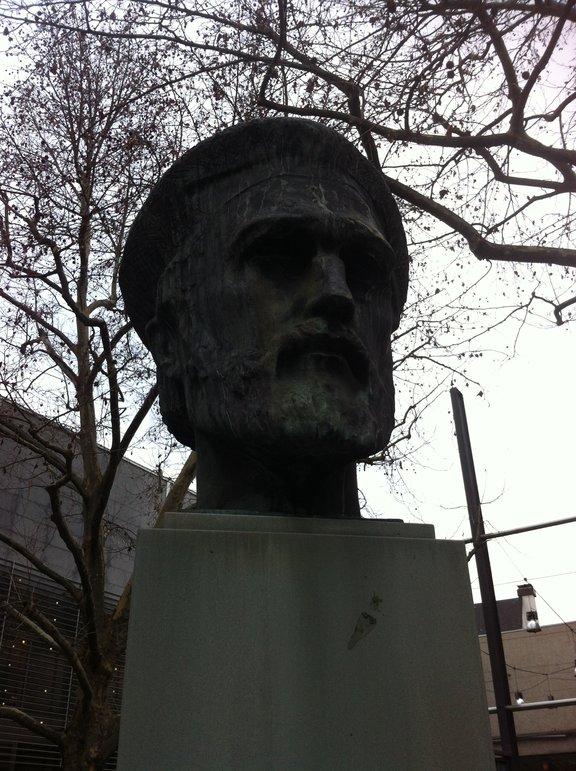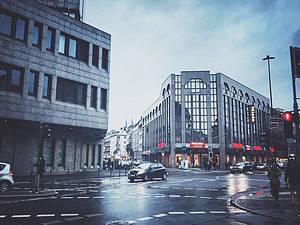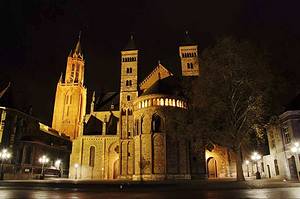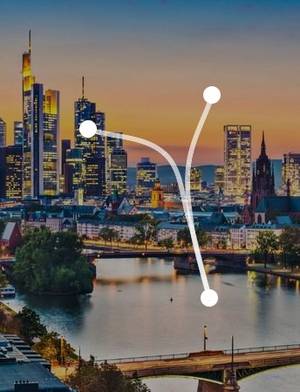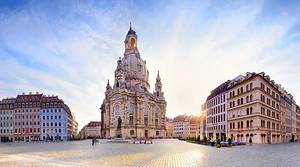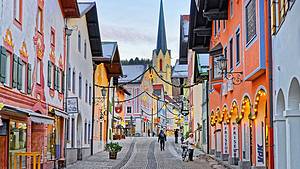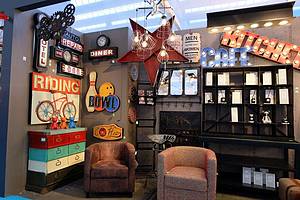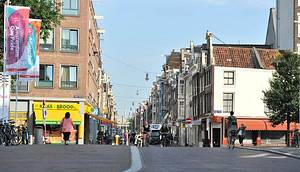The romantic 3-day tour of the Rhine River
5 cities |
16 attraction(s) |
total distance 164
km
 TIPS
TIPS
Day1
Day2
Day3
Day1: Frankfurt
7 attraction(s) ·
7 km
1
Frankfurter Romer
The Roman Square is the town hall square in Frankfurt since the Middle Ages. Located in the center of the old town of Frankfurt, north of the Main River bridge, the west side is the town hall, the southwest side is the Weitheim residence, a beautiful residential building in the late Renaissance style (1600). The south side is the St. Nicholas Church built in the 13th century, made of red sandstone. The east side is the half-timbered houses built between the 15th and 18th centuries. The north side is a stone house built in the style of an Italian palace (1464). In the center of the square stands the Justice Fountain, built in 1543. The Frankfurt Cathedral, the birthplace of the city, is just 200 meters to the east. In 1944, the square was heavily bombed by the British Air Force and was almost completely destroyed, but was rebuilt after the war.
1
km
2
The Frankfurt City Hall was once a place for elections and coronations of emperors. It is a building located in the city center of Frankfurt's old town, consisting of three interconnected medieval-style private residences. The entire complex is named after one of the oldest and most luxurious houses called Zum Römer. It now serves as a registry office and the mayor's office. The Emperor's Hall inside preserves portraits of 52 rulers. Serving as Frankfurt's earliest government office, it became the City Hall in 1404 and was restored to its original appearance in the 1980s. It is a typical German-style architecture and also one of the symbols of Frankfurt. The Roman Square in front of it is worth a visit.
1
km
3
This is one of the most famous churches in Frankfurt, built for St. Bartholomew in 1239 and became the official site of coronation for the Holy Roman Emperors in 1365. Ten emperors were crowned here between 1562 and 1792. A major fire in August 14, 1867, almost destroyed the entire church, which was then rebuilt in neo-Gothic style. However, it was heavily damaged again during World War II, and the current building was constructed in 1950-1953.
In summer, you can buy an ice cream cone, sit on the square in front of the church, and enjoy the slow-paced life in Europe.
2
km
4
This is the birthplace of the famous German poet Johann Wolfgang von Goethe, beloved by the people (August 28, 1794). He spent his youth here and wrote the famous "The Sorrows of Young Werther" and the opening of "Faust" here. Adjacent to Goethe's former residence is the Goethe Museum.
The original residence, built in the 17th century, was destroyed in the flames of World War II but was later rebuilt according to its original design. The furnishings in the kitchen, bedroom, and living room of the residence reflect the artistic style of residential decor in the late Baroque period. Goethe's study is located on the second floor, maintaining the appearance during his lifetime.
The Goethe Museum exhibits a large number of prints, paintings, and busts from the late Baroque period, classical, romantic, and Biedermeier styles of the 18th and 19th centuries. These works vividly depict Goethe's relationship with artists such as Johann Heinrich Füssli, Caspar David Friedrich, and Frankfurt painters. The public organization, Free German Cathedral Council, is responsible for maintaining Goethe's parents' residence, the Goethe Museum, the Poet's Archive, and a research library where visitors can see important and valuable literary documents and prints.
1
km
5
This is one of the numerous Skylines of Frankfurt. It opened in 2000 and is 200 meters tall. Visitors can take an elevator up to its observation deck to enjoy a panoramic view of Frankfurt, especially at night, and experience the city atmosphere. Come here and choose your favorite Skyline!
1
km
6
The Frankfurt Old Opera House, built in 1880, is a typical example of Italian Renaissance architecture. The original building was destroyed in World War II and was reopened to the public in 1981 after being rebuilt. It offers over 340 performances every year, not only limited to operas, but also includes performances by orchestras and more.
4
km
7
This steel-framed pedestrian bridge spans the Main River, connecting the southern and northern banks of Frankfurt. Construction of this Neo-Gothic style bridge began in 1869 and underwent multiple renovations before taking its current form in 1993.
Day2: Cologne > Bonn
4 attraction(s) ·
41 km
1
Cologne Cathedral is a landmark Catholic church located in the city center of Cologne. It is a masterpiece of medieval European Gothic architecture and is renowned as one of the most perfect Gothic cathedrals in the world. It took over 600 years to complete and attracts millions of visitors every year. The cathedral features the largest altar in medieval German churches and priceless stained glass windows depicting biblical stories. The cathedral's platform offers a impressive panoramic view of the city and the Rhine River. The square in front of the cathedral is a lively gathering place for celebrations and activities.
1
km
2
Ludwig Museum is a modern-style building with a jagged roof, which contrasts sharply with the adjacent cathedral and train station. Built in 1976, this museum has been donated 774 works by Pablo Picasso by the famous German art patron Peter Ludwig and his wife. It is the museum with the largest collection of Picasso's works, other than the Picasso museums in Paris and Barcelona. It also collects a large number of modern art works, including works by Dali, Lichtenstein, and Warhol. The museum also has a photography museum called Agfa-Foto-Historama, which collects photographic works from the past half century and is the largest museum of historical photos and cameras in the world. It is a great place for photography enthusiasts.
1
km
3
Hohenzollern Bridge is the oldest bridge in Cologne, built between 1907 and 1911, consisting of three railway bridges and a pedestrian walkway. Connecting the cathedral and spanning the Rhine River, Hohenzollern Bridge undoubtedly offers the most beautiful scenery. People in Cologne believe that hanging a lock on Hohenzollern Bridge and throwing the key into the Rhine River can make love last forever. The colorful variety of copper locks on this bridge forms a unique attraction.
40
km
4
The Rhine Valley Park covers an area of approximately 200 hectares and is a place for people to rest and relax, the green heart of Bonn. The park spans both sides of the Rhine River, and the vast lowland lake (Auensee) is one of the main attractions for tourists. You can also rent a boat to cruise on the lowland lake.
Day3: Koblenz > Mainz
5 attraction(s) ·
117 km
2
One of the most magnificent churches in Germany. The archbishop's memorial tombstone and the church museum house many precious artworks.
2
km
3
A specially crafted organ platform and exquisite ceiling murals created by Johann Baptist Enderle.
1
km
4
In the Gutenberg Museum, which showcases the art of printing (also known as the black art), you will learn about Johannes Gutenberg's invention of movable type printing in Mainz.
2
km
5
Nine splendid stained glass windows, created by the Russian Jewish master artist Marc Chagall in his twilight years, fill this place with a sense of mystery and a medieval texture, serving as a symbol of reconciliation between Judaism and Christianity.














